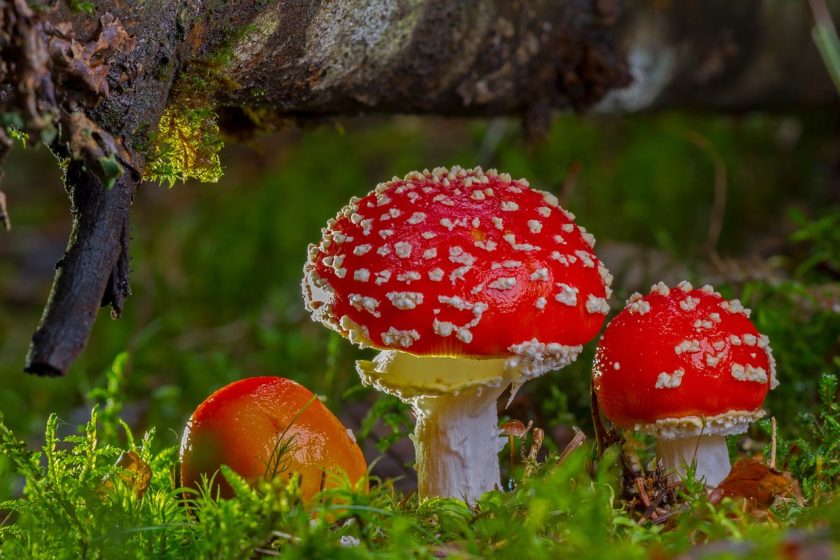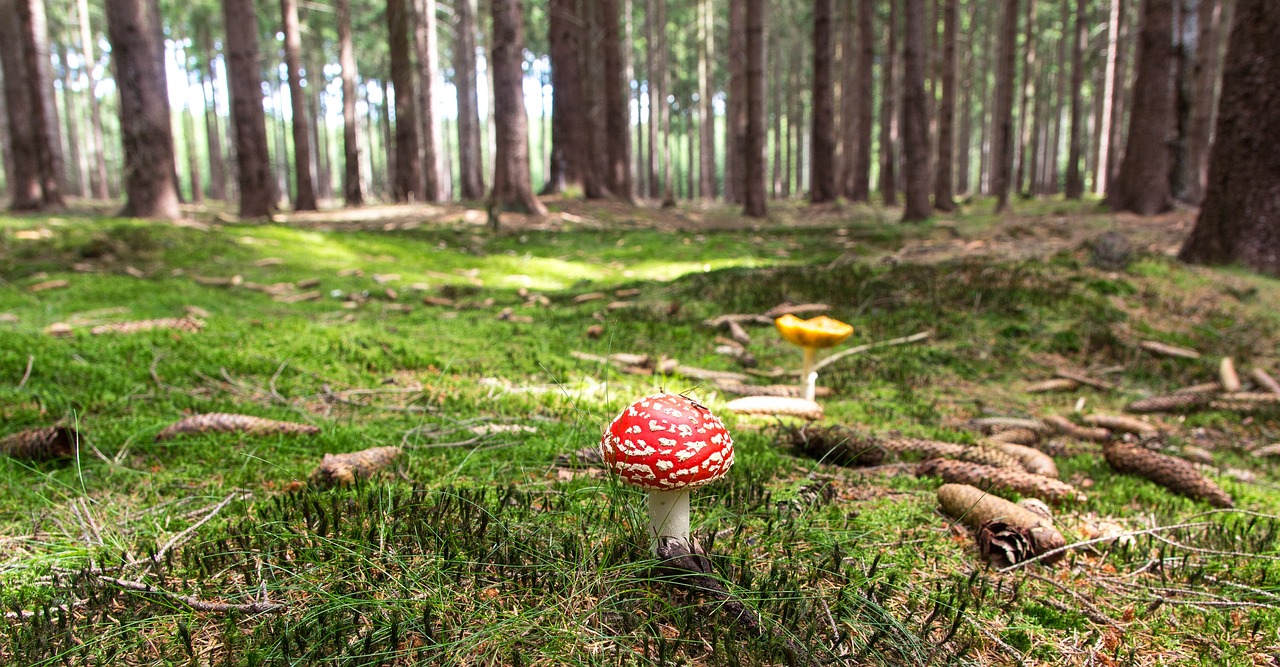Amanita Muscaria, which is commonly known as the fly agaric, is a mushroom that many people around the world find fascinating, both for its striking red and white-spotted appearance and its hallucinogenic properties.
The mushroom, which thrives in cool climates across the Northern Hemisphere and can be often found beneath coniferous and deciduous trees, has a lot of different cultural significance across the globe.
But before we look at the Amanita Muscaria’s cultural impact, let’s first explore its effects.
The Effects of Using Amanita Muscaria Recreationally

When Amanita Muscaria is used as a recreational drug, the user can experience a variety of effects, including changes in perception, an emotional impact, and physical reactions.
Perception Changes
These changes may come in the form of visual distortions or auditory hallucinations. It’s not uncommon to perceive colors, sounds, or objects differently than they are. In some cases, users report entering a dream-like state where the perception of time and space is distorted.
Emotional Impact
Some people might feel mood enhancements from using Amanita Muscaria. This often manifests as elevated spirits or increased sociability. However, individual responses and experiences can vary greatly.
Physical Reactions
Physical side effects include involuntary muscle movements and increases in body temperature, salivation, and sweating. Nausea and stomach discomfort have also been reported due to the mushroom’s toxic components.
It is important to remember that the effects are not always positive and that individual responses can vary greatly. The effects can differ based on dosage levels, personal health conditions, tolerance levels, and your mental state at the time of ingestion.
There are also potential risks, including dependency issues and adverse medical and psychological effects, that you should be aware of before consuming Amanita Muscaria for the first time.
However, it is equally important to remember that many people enjoy using Amanita Muscaria mushrooms recreationally without suffering any ill effects.
Ultimately, it is crucial that you learn as much as you can about the Amanita Muscaria mushroom before taking it. You can then determine things like the right dosage to take, the right frame of mind to have before taking, and the best location to take it before you embark on your journey.
The Cultural Significance of Amanita Muscaria Across the World
Now you know a little about Amanita Muscaria, let’s take a look at its cultural significance throughout the world.
Medicinal Use and Healing Practices
Amanita Muscaria has been used in traditional medicine to treat various ailments throughout the ages.
For example, some tribes in North America used it as a salve for wounds and consumed small amounts of it to relieve pain.
Folklore and Mythology
Across Europe, Amanita Muscaria holds deep-rooted ties to folklore and mythology.
For instance, in Scandinavian tales, it is believed that Viking berserkers consumed the mushrooms before going into battle to induce fury.
In Eastern Europe, particularly Russia and Siberia, there are legends about shamans using the fungus for spiritual journeys due to its hallucinogenic properties.
Popular Culture and Artistic Representations
The image of the red-and-white spotted toadstool has become an unmistakable icon in popular culture.
It frequently appears as garden ornaments for gnomes to sit on and it features prominently in children’s illustrations, such as those with fairies and sprites.
A prominent example is The Smurfs. The blue creatures, invented by the Belgian Peyo, use fly agarics for seats and dwellings.
These captivating mushrooms have adorned paintings since the Renaissance, too. For example, the renowned artist Hieronymus Bosch subtly included them in one panel of his Garden of Earthly Delights painting.
And in the present day, the Amanita Muscaria is often associated with the Super Mario Brothers video game franchise. The Super Mushroom power-up items and mushroom platforms are directly inspired by the Amanita Muscaria.
The mushroom also captured Disney’s imagination. In the 1940 animated film Fantasia, there is a delightful and memorable scene in which Amanita Muscaria mushrooms dance.
Also Read: The Impact of Marijuana on Different Cultures of the World.
Literature
Authors haven’t shied away from exploring the intoxicating effects of the Amanita Muscaria mushroom.
For example, the Anglo-Irish writer Oliver Goldsmith vividly discussed the mushroom’s effects in his 1762 novel Citizen of the World and the English naturalist Mordecai Cubitt Cooke delved into how it distorts the perception of object sizes in his works The Seven Sisters of Sleep and A Plain and Easy Account of British Fungi.
Such observations possibly influenced Lewis Carroll writing about a mushroom that can make one change in size, in his famous book Alice’s Adventures in Wonderland.
The Amanita Muscaria, and mushrooms inspired by it, also feature in novels by Charles Kingsley, Thomas Pynchon, and Alan Garner.

